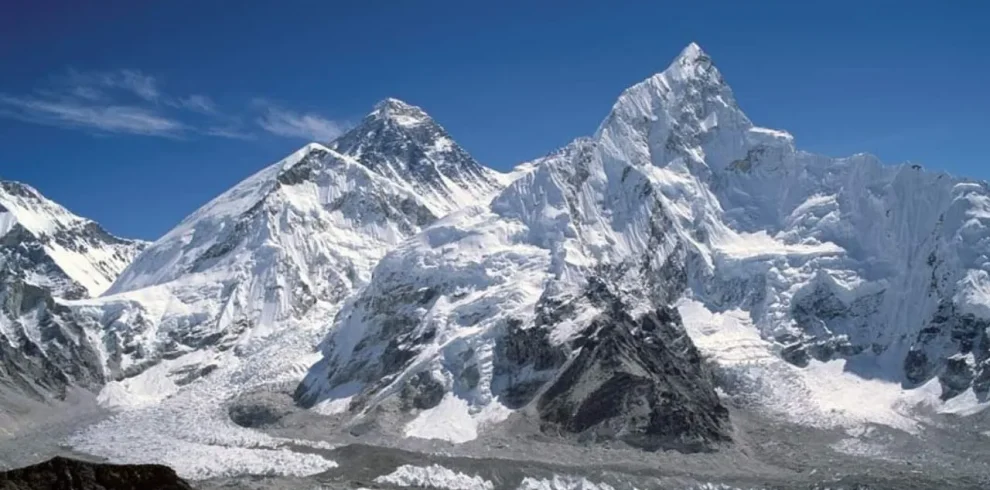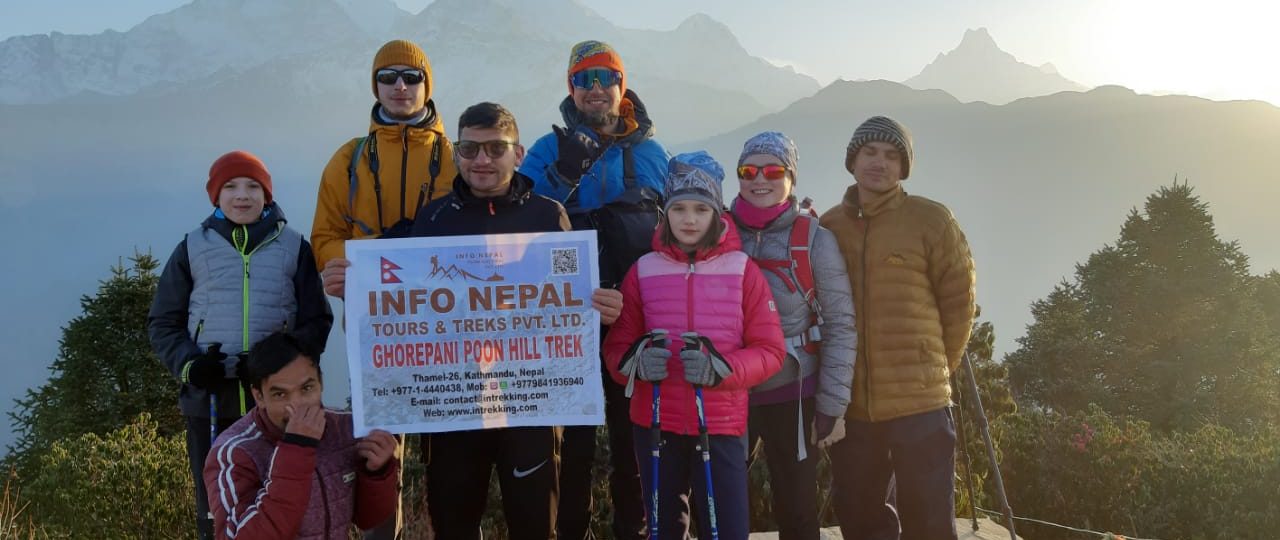
 Written By: Rajesh Neupane
Written By: Rajesh Neupane
10 Things You Should Know about Everest Base Camp Trek
- 1. Best Time to trek in Everest Base Camp
- 2. The cost required for the trek
- 3. Hiring a local guide is helpful.
- 4. Trekking Permits and Regulations
- 5. Best to start a trek from Jiri
- 6. Be aware of Altitude Sickness.
- 7. Take your time while trekking.
- 8. Staying Hydrated is essential.
- 9. A properly fitted backpack
- 10. Have fun
- Conclusion
Enquiry Form
Nepal is a favorite place for trekkers all over the world due to its magnificent mountain regions and landscapes. Trekking in Nepal is the best decision you could ever make in your life.
The vibe here is very different and satisfying. The Himalayas, landscapes, flora, fauna, and warm, welcoming people make your heart flutter.
Being the world’s highest peak, Mt. Everest is a dream to see. Climbing this mountain is impossible for us, as it requires lots of passion and years of training and is very risky.
You need not climb Mount Everest itself to experience the heavenly view of it. You can trek around the Everest region to get a view of it.
Everest base camp trek is one of the majestic treks of Nepal, allowing you to experience the Himalayan life with beautiful destinations. To make this trek successful, you need to consider many things.
You must make pre-preparation by physical training and mental affirmation. Because the journey ahead of you is like a roller coaster, you must be well prepared.
1. Best Time to trek in Everest Base Camp
The best time to trek Everest Base Camp is in the Autumn season, which starts in late September and continues until November, and the Spring season, which starts in March and ends in May.
Autumn is the best season feasible for Everest Base Camp Trek, as the temperature is moderate in comparison to the extreme coldness of Winter. This season is very dry and clear, suitable for trekking.
Spring is also another suitable season for trekking. This season is also very dry and clear, suitable for trekking with warm temperatures in comparison to the summer season with downpours.
2. The cost required for the trek
The total cost for the EBC trek is around $2100 to $4500. The cost varies according to your starting place, your plan, and many other factors. The main two factors would be seasonal or off-seasonal. Your cost varies a lot during seasonal Times of the year.
The cost for the trek includes a visa, flight, accommodation, food, water, guide, porter, and your equipment. You need to be very well prepared for this base camp as it is going to be more difficult than other treks.
While arranging all the essentials required for the trek, the cost seems to be expensive.But we suggest you at least once in your life; it is worth all your money.
3. Hiring a local guide is helpful.
A guide is a person who is a certified professional with previous trekking experience and a license. They are going to help you in your journey with the permits, tickets, and hotels and ensure your health during the trek.
As altitude sickness is most probable in the high altitude region, having a guide makes you feel safe. It is better to be a local guide because a local guide is very familiar with the culture and traditions of this region.
Not only that, they know all the teahouses and their owners, which makes it easier for night stays. Booking a room is quite difficult, so having a local guide beside you helps to ease this difficulty.
4. Trekking Permits and Regulations
Permits are the legal license that is compulsory for trekking in Nepal. Hence, for this trek also. There are two permits required to trek Everest Base Camp: Sagarmatha National Park Permit and Khumbu Pasang Lhamu Rural Municipality Entrance Permit.
You pass through Sagarmatha National Park to reach the camp; permission is required. Everest Base Camp lies in the Khumbu region, so another permission is required.
This is the rule you must follow. But you need not worry, as permits are taken care of by the guide you hire. You need a permit as you surpass a national park and a municipality during your journey.
5. Best to start a trek from Jiri
Many trekkers start their journey to base camp from Lukla. But to avoid altitude sickness, it’s best to start your trek from Jiri. Your body takes some time to adapt to the environment around you, so it is very necessary to go to higher altitudes slowly.
Lukla is situated at an altitude of 2860 m, while Jiri is situated at an altitude of 1995 m. That’s why it’s best to start from Jiri. You can travel by bus to Jiri from Kathmandu, then hike to Cheplung and join the regular Everest Base Camp trail.
It takes you an additional 6 days to read Cheplung from Jiri, but the journey is worth it.
6. Be aware of Altitude Sickness.
Altitude Sickness is very common in high altitudes above 2000 m due to lack of oxygen. While you feel difficulty in breathing or feel dizzy, these are the symptoms of altitude sickness. If not treated in Time, it can take your life.
So, you must take a rest while trekking, not forcing your body limit. If there is any difficulty, inform your guide quickly, and they will help you. This is when a local guide is helpful. Though they are not medics, they are familiar with this kind of situation.
Once your guide is aware of your condition, they will take necessary measures and help you descend for good oxygen intake, which is the best solution for altitude sickness. For an emergency, you should use oxygen masks.
7. Take your time while trekking.
Altitude Sickness is very common in the high altitudes above 2000 m. This is a very dangerous condition which is life-taking. So, prevention is better than care. Your body needs enough time to adapt to the high-altitude environment with less oxygen.
So, take your time while trekking. You should take care of your health, wearing warm clothes. Being sick is not an option at all. You have to go slow according to your body limit.
Take a rest and walk and repeat it. You shouldn’t push yourself beyond your limits. Give importance to your overall health during the trek.
8. Staying Hydrated is essential.
You must stay hydrated during the journey—at least 3 liters of water daily. Everyone should carry their bottle. Also, bring a filter bottle for taking germ-free water. Water is a vital essential of your body.
Suffering from dehydration is not an option at such a high altitude. So, intake enough food and water with proper rest. Never be careless with your health. Your one carelessness can take your life.
9. A properly fitted backpack
This trek is 13 days long. If you start from Jiri, then you have 6 additional days. So, you need a properly packed backpack. You need approx 10 kg of bag. You need to be considerate while packing your bags, as this affects your whole journey.
For a proper backpack, better than buying it online, go to shop personally to try out the bags. Buy the one that fits your body shape and makes you comfortable to carry. This way, the shopkeeper is also able to give you more guidance for the bag type.
10. Have fun
At last, what matters is the fun you had. Enjoy your trek in our beautiful country with the utmost level of satisfaction. Beautiful sceneries, majestic landscapes, up-down trails, unbelievable mountains, and the unique local culture of the Gurung community are going to blow your mind with its nature. Enjoy your trek to the fullest and revive your life with this memory.
Conclusion
To conclude, all the must-know things about trek are mentioned above. You need to prepare beforehand for any trek, from hiring guides to packing the necessities. Take care of yourself during the trek, and if there are any circumstances, there is a guide to help you.
For inquiries or to contact us regarding trekking adventures, please reach out to us at [email protected] or +977-9841936940 (WhatsApp).